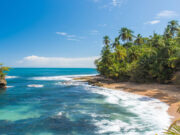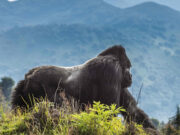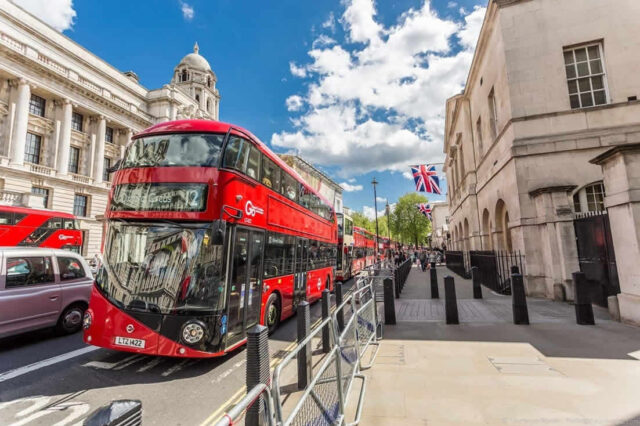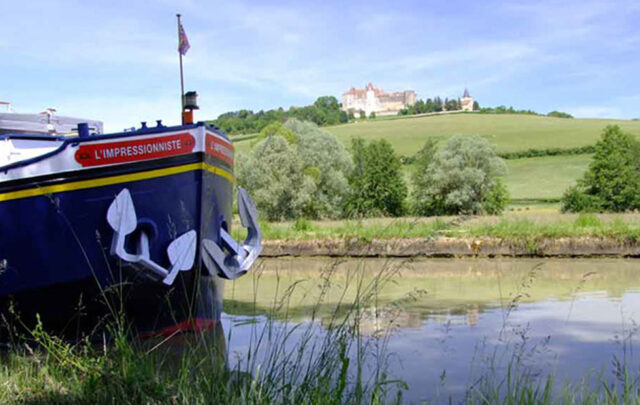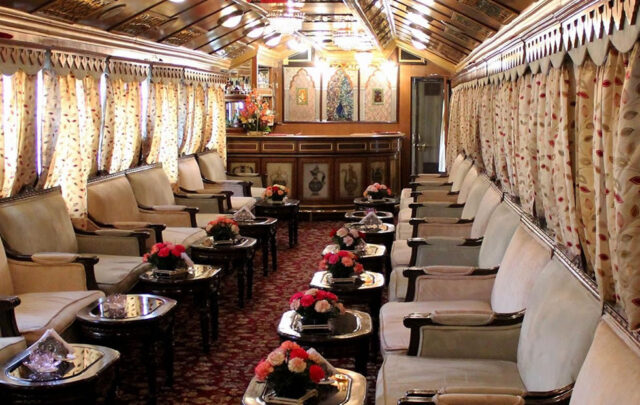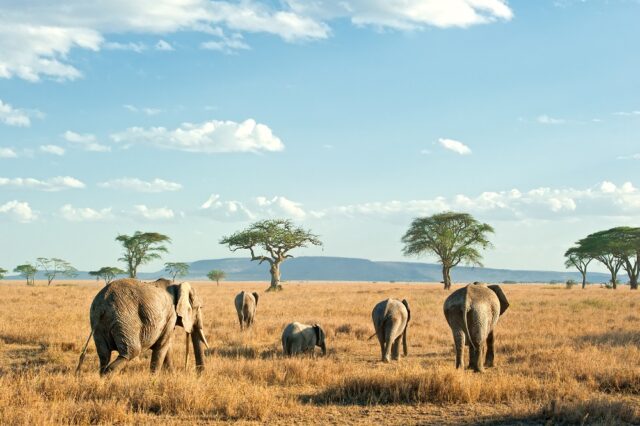Introducing Travel Experiences For Women Across The Globe Ahead Of International Women’s Day & The 100th Anniversary Of The Women’s Vote Act In The UK
International Women’s Day is celebrated annually throughout the world; recognizing female achievements, commemorating the women’s suffrage movement and highlighting the plight of women facing inequality across the globe.
Ahead of this year’s International Women’s Day on 8th March, and in this centennial year of British women gaining the right to vote, Hills Balfour has therefore rounded up the influence of Girl Power in the travel sector.
From Mexican dining in Toronto at a restaurant run entirely by women, to learning the traditions of the Himba tribeswomen of Namibia, to cheering on the women’s elite ice canoe teams in Québec, to a tour operator supporting charities to improve the lives of young girls, here we put a spotlight on women leaders and innovators in travel as well as unique holidays for female travellers to discover…
1. QUEENSLAND: GIRLS GOT GRIT
2. ONE TRAVELLER: PROJECT LADLI, SUPPORTING YOUNG WOMEN IN JAIPUR
3. ONTARIO: EAT OUT IN AN ENTIRELY FEMALE-RUN RESTAURANT
4. NAMIBIA: MEET THE WOMEN OF THE HIMBA PEOPLE DEDICATED TO PRESERVING THEIR LONGSTANDING TRADITIONS
5. ABU DHABI: INSPIRATIONAL WOMAN, DR MARGIT GABRIELE MULLER, LEADS THE ABU DHABI FALCON HOSPITAL
6. MAYFLOWER 400: MEET THE WOMAN RAISING AWARENESS OF THE WOMEN OF THE MAYFLOWER AHEAD OF THE 400TH ANNIVERSARY OF THE VOYAGE IN 2020
7. QUEBEC: MEET THE FEMALE ICE CANOE RACERS MAKING WAVES IN THE SPORT
8. RIVIERA TRAVEL FOR INDEPENDENT WOMEN: NEW DANUBE RIVER CRUISE EXCLUSIVELY FOR SOLO TRAVELLERS
Queensland: Girls Got Grit
From stunning beaches and crystal-clear waters to rain forests growing out of the sand, Fraser Island, and celebrates its 25th anniversary of UNESCO World Heritage Listing this year. Australian Off-road Academy offers a ‘Girl’s Got Grit’ course which teaches women 4×4 track skills ready for off-roading adventures across the world’s largest sand island.
The programme includes a number of activities and sightseeing adventures including a trip to Lake McKenzie, tubing down Eli Creek and time to explore the famous Maheno Shipwreck, as well as accommodation at Kingfisher Bay Resort – a luxury eco resort.
One Traveller: Project Ladli, Supporting Young Girls In Jaipur
One Traveller, the solo holiday tour operator for mature single travellers, supports charities around the world.
One of the charities the tour operator is supporting in 2018 is Project Ladli, based in Jaipur, India. The charity is a centre which houses and helps around 60 girls, by teaching them various life skills, as well as offering informal classes in Hindi, English and dance.
One Traveller is a strong advocate in the work of Project Ladli and offers its guests on the India – Delhi, Royal Rajasthan and Bombay holiday a chance to meet the girls and see for themselves the first-hand practical support One Traveller offers.
Ontario: Eat Out In An Entirely Female-Run Restaurant
Visitors to Toronto now have a unique opportunity to dine in a restaurant entirely run by women.
Opened by chef Elia Herrera, Los Colibris is an upscale Mexican restaurant in the city’s buzzing downtown area. Foodies will love the hand-pressed tortillas, slow-cooked duck carnitas and dozens of different salsas, each with a unique Mexican twist.
Diners can also enjoy a range of delectable cocktails from the bar.
The restaurant is entirely run by women, from the chefs and wait staff to the marketing and events teams.
Namibia: Meet The Women Of The Himba People Dedicated To Preserving Their Longstanding Traditions
The Himba people migrated to the Kunene Region of Northern Namibia in the 16th century from Botswana and the today the number of tribespeople stands at 16,000.
The striking Namibian natural environment has greatly transformed many beauty rituals and traditional ways of life for the Himba tribeswomen. Himba women apply butter, ash and red-hued ochre to their skin and hair each day to protect from the African sun with the colour red as a highly desirable expression of beauty.
The spectacular red hint is reserved solely for the women of the tribe who are continually seen as the most beautiful in Africa, with the tradition being passed down through generations. Women who reach puberty wear the Himba crown, the Erembe, made of cow or goat leather to signify maturity and beauty.
The women of the Himba wear elaborate, metal studded jewellery and weave their hair in complicated, intricate and mesmerising tresses that distinguish themselves from other tribes.www.namibiatourism.com.na.
Those looking to experience Himba culture and meet the tribeswomen first-hand can book a responsible tour. Visiting the Himba should be undertaken with sensitivity and respect for their traditions and lifestyle. Audley Travel offers a 12-day Skeleton Safari from £9,443pp to meet the Himba people, travel by light aircraft over the Skeleton Coast and view the wildlife.
Abu Dhabi: Inspirational Woman, Dr Margit Gabriele Muller, Leads The Abu Dhabi Falcon Hospital
The Abu Dhabi Falcon Hospital, directed by German veterinary surgeon Dr Margit Gabriele Müller, continues to lead the way with its falcon welfare institution, taking the ‘World’s Responsible Tourism Award’ for the second consecutive year at the 2017 World Travel Awards.
The hospital has become one of the largest avian hospitals and research centres in the world, with 12,000 falcons entering its doors each year, visiting for annual check-ups, feather implants or minor operations. Dr Margit Gabriele Müller took over as director in 2001 and has since introduced a pet care centre for cats and dogs, whilst securing countless awards recognising the hospital’s work.
And it’s not just popular with birds, as the hospital has become a favourite tourist attraction, allowing visitors to see the operating room and even watch a falcon get a pedicure!
Mayflower: Meet The Woman Raising Awareness Of The Women Of The Mayflower Ahead Of The 400th Anniversary Of The Voyage In 2020
As the UK and the US prepare to mark the 400th anniversary of one of the most influential journeys in global history, Sue Allan, a Historian, Tour Guide and Author of The Mayflower Maid is raising awareness of the vital role the women of the Mayflower played in the survival of the colony.
History books often refer to the ‘Pilgrim Fathers’ who sailed on the Mayflower as it was the male passengers who signed the ‘Mayflower Compact’ agreement on arrival in the New World, and so the women of the Mayflower are often overlooked.
There were 18 adult women as well as 30 children on board the ship, and of those women on board, three were in the final trimester of pregnancy. Elizabeth (Fisher) Hopkins gave birth to a son, Oceanus, during the voyage and on arrival in the new world, Susannah White gave birth to a son aboard the Mayflower who was named ‘Peregrine’, derived from the Latin for ‘pilgrim’.
Sue Allan from Lincolnshire always held an interest in the story of the Mayflower Pilgrims, many of whom came from the villages of South Yorkshire, Nottinghamshire and Lincolnshire.
When she went on to marry an American her interest in the story and its role in UK and US history deepened. Sue continues to research and study the lives of the Pilgrims and recently uncovered the birth places of three of the Pilgrims that for the last 400 years had been unknown.
Sue has written 14 books including her first novel, Mayflower Maid, which was the first in a New World Trilogy, is set in 1623 and tells a tragic tale of love and loss amidst the strife and religious bigotry of 17th century England.
It was published in 2005 as Sue, who wrote the book whilst caring full time for her disabled son, turned 50 and in December of the same year, was voted one of the ‘Best Reads of 2005’ by listeners of BBC Radio 4’s Open Book programme. The success of this book led Sue to start researching the Pilgrims and to become a historian.
For the past decade, Sue has been running immersive guided tours for UK and American visitors and Mayflower descendants across the Pilgrim Roots region of northern England taking them to visit the churches and manor houses of Scrooby, Babworth and Austerfield that hold centuries of history and were the homes of the women of the Mayflower who went on to make that historic voyage.
Quebec: Meet The Female Ice Canoe Racers Making Waves In The Sport
Ice canoeing was invented in Québec and dates back to the early 1800s when it was developed as a means of transport to cross the frozen St Lawrence river.
The advent of steamboats put an end to this means of transportation and in 1894 ice canoeing became a competitive sport, with the first race taking place during the first Winter Carnival in Québec City.
The gruelling sport is unique to Québec and is considered one of the toughest in the world. A race involves crews of five alternately pushing their canoe across the ice and rowing against strong currents, all whilst battling the elements in sub-zero temperatures!
The Winter Carnival ice canoe race is the most important competition in the race calendar and originally only men could compete. The first women’s team competed in 1966 as part of the men’s race but today there is a dedicated elite women’s class which draws in the crowds each year, and women also compete in mixed teams in the amateur sport class.
Originally considered too tough a sport for women, it’s now believed the female teams’ lighter combined weight enables them to traverse the frozen waters with more speed. Visitors to Québec can also try their hand at ice canoeing on an Ice Canoe Excursion with Québec Ice Canoeing.
Riviera Travel For Independent Women: Take Riviera Travel’s New Danube River Cruise Exclusively For Solo Travellers
Female solo travellers can venture on a cultural break to Austria this year with Riviera Travel’s new 8-day full-board Blue Danube River Cruise designed exclusively for Solo Travellers.
The cruise includes a range of cultural experiences and activities such as a guided tour of Vienna, live classical quartet recital on board, a tour of baroque Bratislava, a cruise through Austria’s scenic Wachau region, a visit to Melk Abbey central Europe’s most spectacular baroque monastery and a tour of Budapest.
Riviera Travel’s price promise also ensures everyone who books a cruise or escorted tour pays the same price with no tiered costs, no hidden extras, and no unexpected surcharges or single supplements along the way. The cruise costs £1,899pp for departures on 1st November 2018 and includes return flights from selected airports and transfers.




